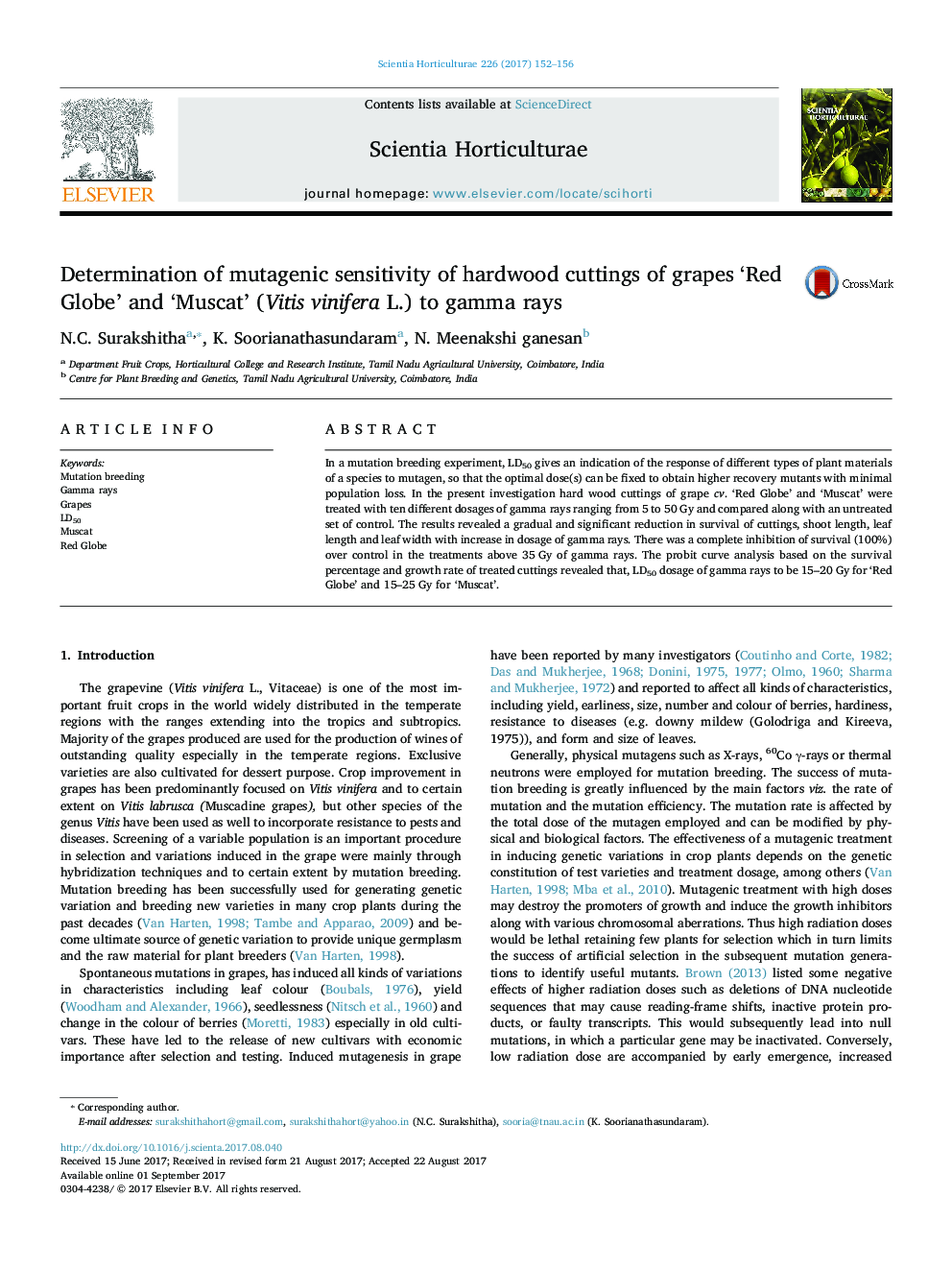| کد مقاله | کد نشریه | سال انتشار | مقاله انگلیسی | نسخه تمام متن |
|---|---|---|---|---|
| 5769355 | 1628772 | 2017 | 5 صفحه PDF | دانلود رایگان |
- In mutation breeding, determination of LD50 is the main step to conduct breeding process.
- Determination of LD50 for grape cv. 'Red Globe' and 'Muscat' would help to induce desired mutations by radiation treatment.
- By choosing LD50 doses it avoids damage to planting material and gives higher multiplication and survival rates along with some useful mutations, which might be not possible by lower dosage.
- Based on the survival percentage and growth rate of gamma rays treated cuttings, LD50 for 'Red Globe' and 'Muscat' was found to be 15-20 Gy and 15-25 Gy respectively.
In a mutation breeding experiment, LD50 gives an indication of the response of different types of plant materials of a species to mutagen, so that the optimal dose(s) can be fixed to obtain higher recovery mutants with minimal population loss. In the present investigation hard wood cuttings of grape cv. 'Red Globe' and 'Muscat' were treated with ten different dosages of gamma rays ranging from 5 to 50Â Gy and compared along with an untreated set of control. The results revealed a gradual and significant reduction in survival of cuttings, shoot length, leaf length and leaf width with increase in dosage of gamma rays. There was a complete inhibition of survival (100%) over control in the treatments above 35Â Gy of gamma rays. The probit curve analysis based on the survival percentage and growth rate of treated cuttings revealed that, LD50 dosage of gamma rays to be 15-20Â Gy for 'Red Globe' and 15-25Â Gy for 'Muscat'.
Journal: Scientia Horticulturae - Volume 226, 19 December 2017, Pages 152-156
